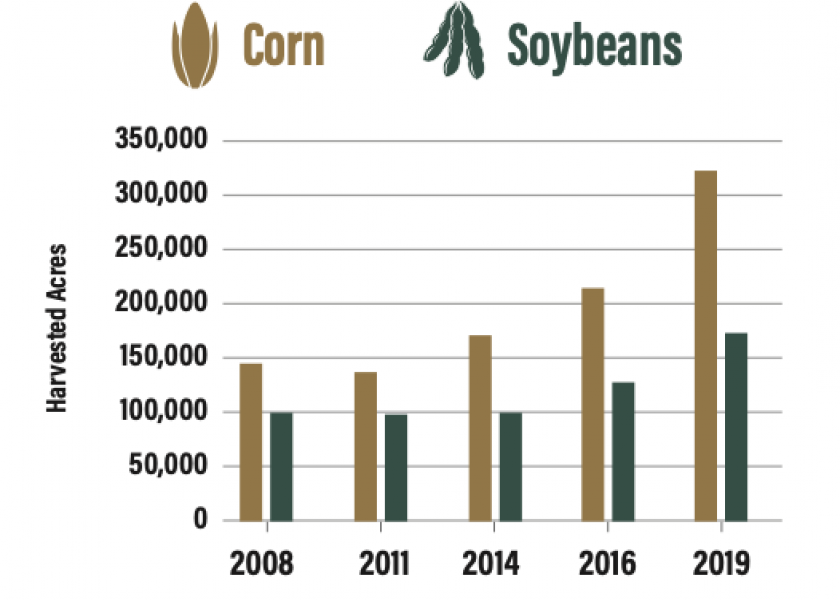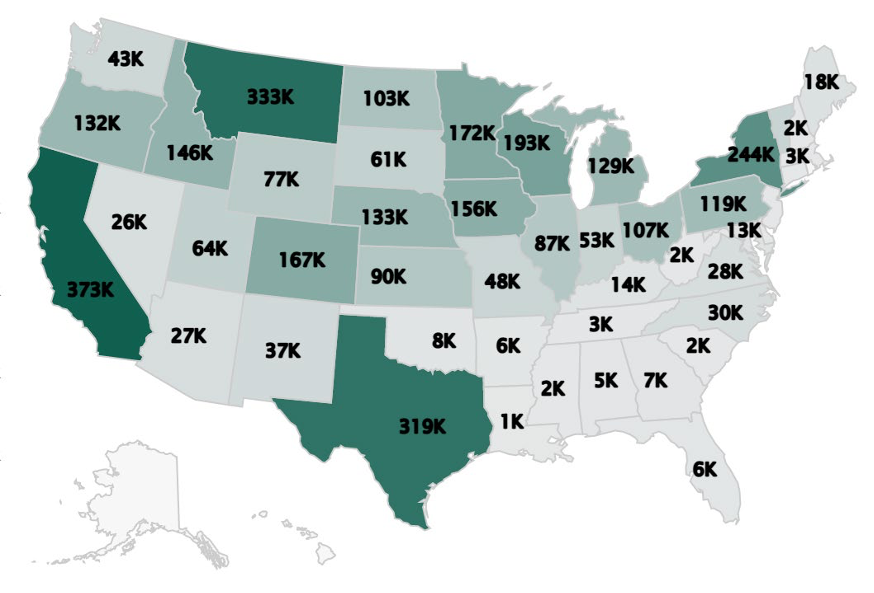The Race for Organic

Once a small piece of the food pie, organic foods are going mainstream and jumping into more row crop fields. Organic products are now available in nearly 20,000 natural food stores and nearly 3 out of 4 conventional grocery stores, according to USDA.
From 2008 to 2019, harvested acreage of organic corn increased 124% while acreage for organic soybeans rose 73%, according to USDA. Despite the upward trend, the organic share of total domestic corn and soybean acreage accounted for less than 1% of total harvested acres for each crop in 2019.
Growth Potential
This growth is not surprising to David Ross, sales and operations manager for Great Harvest Organics, a division of Beck’s Hybrids. He has seen demand for organic corn and soybean seed grow as farmers look to diversify their row crop lineup or reduce their use of synthetic chemicals or fertilizers.
In addition, he says, organic crops offer price premiums.
“Organic corn sells for around $10 a bushel, while soybeans are just over $30 a bushel,” Ross says. “Many people forget buyers are willing to pay 2.3 times more because it’s 2.3 more risky to produce organic crops.”
Weeds and fertility are the two biggest challenges for organic crop production, Ross says. Tillage and cover crops are viable tools in sup- pressing weeds, he says. For fertility, the growers he works with tend to use poultry or hog manure.
“Organic farming offers a steep learning curve and a 36-month transition period from conventional agriculture to certified organic,” Ross says. “But the future looks bright for this segment.”
Total U.S. Organic Corn Acres by State
U.S. organic corn harvested acres will reach 455,000 in 2021/22, up 4% from the previous year, according to Mercaris, a data service company. Organic soybean harvested acres will reach 252,000 in 2021/22, which is up 10% from the previous year.

For more on the growing trend, listen here:







